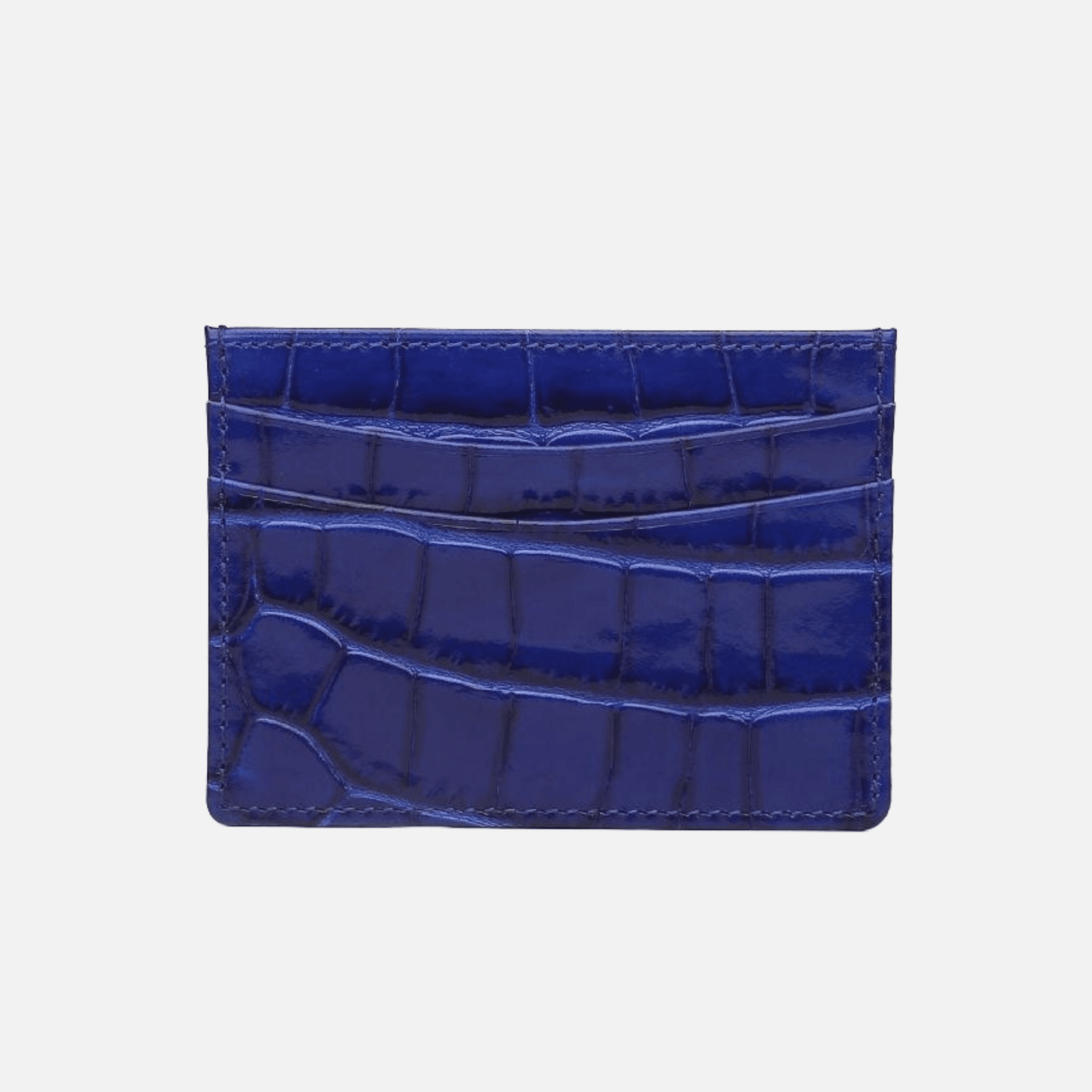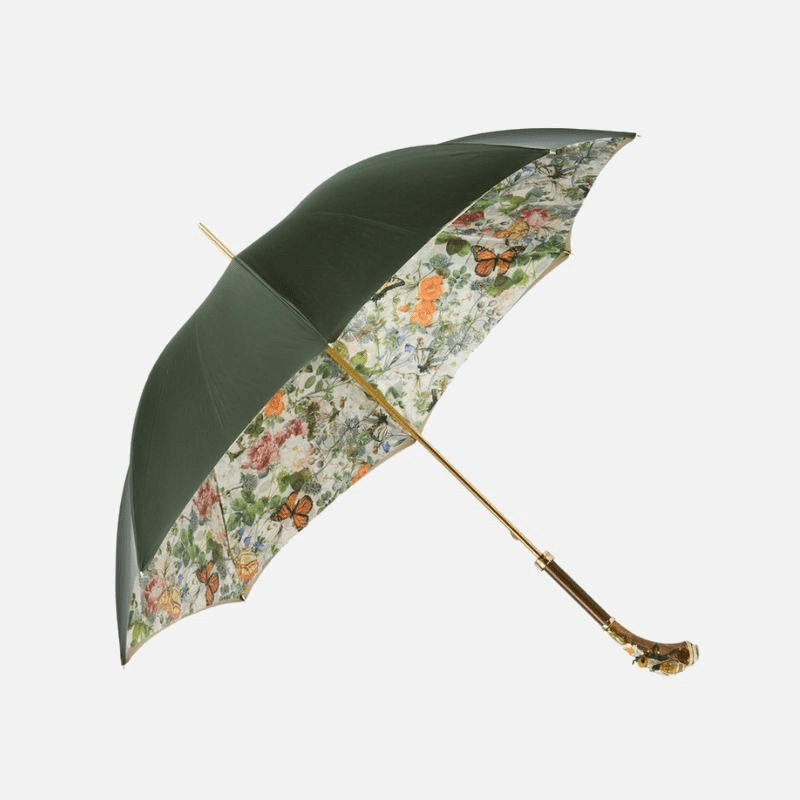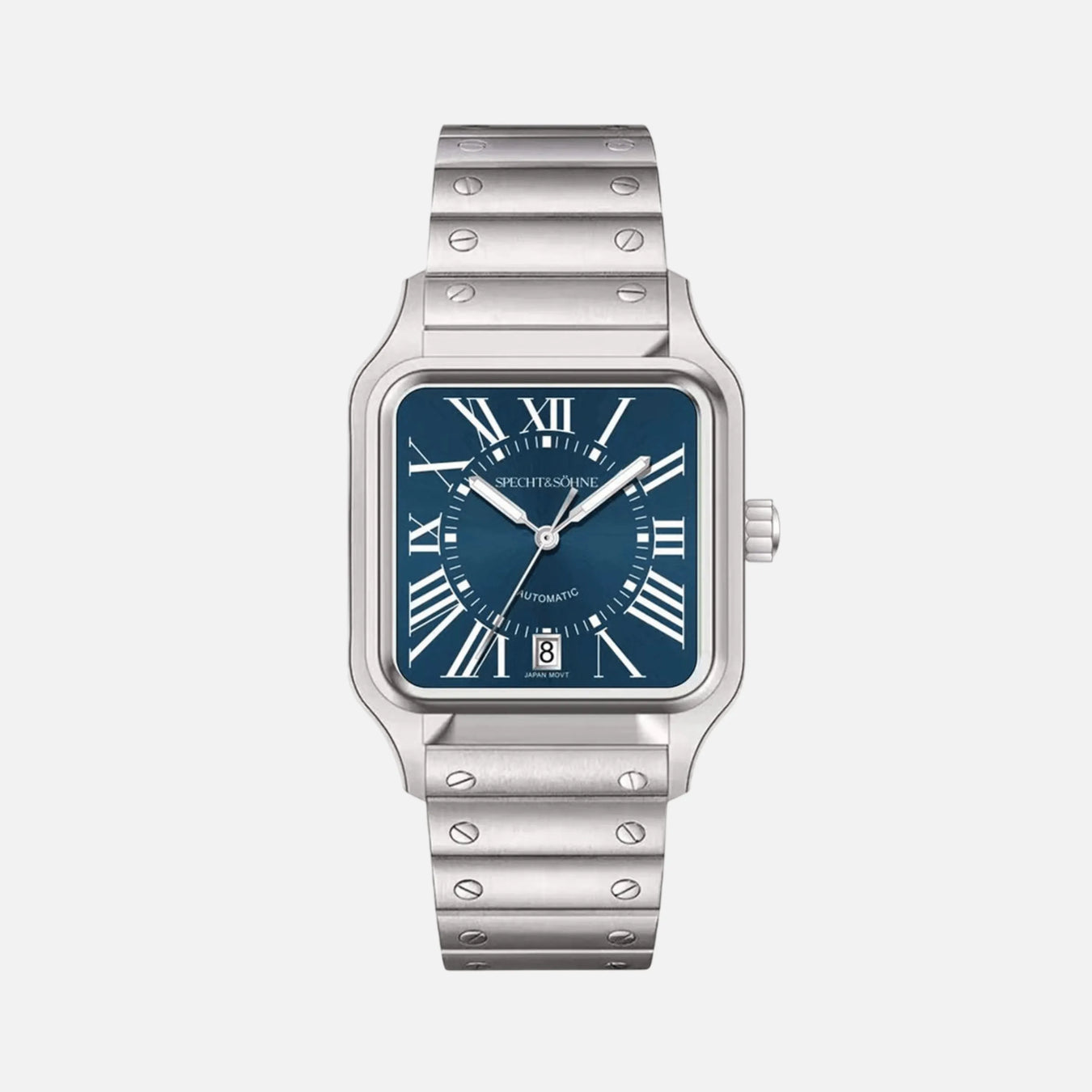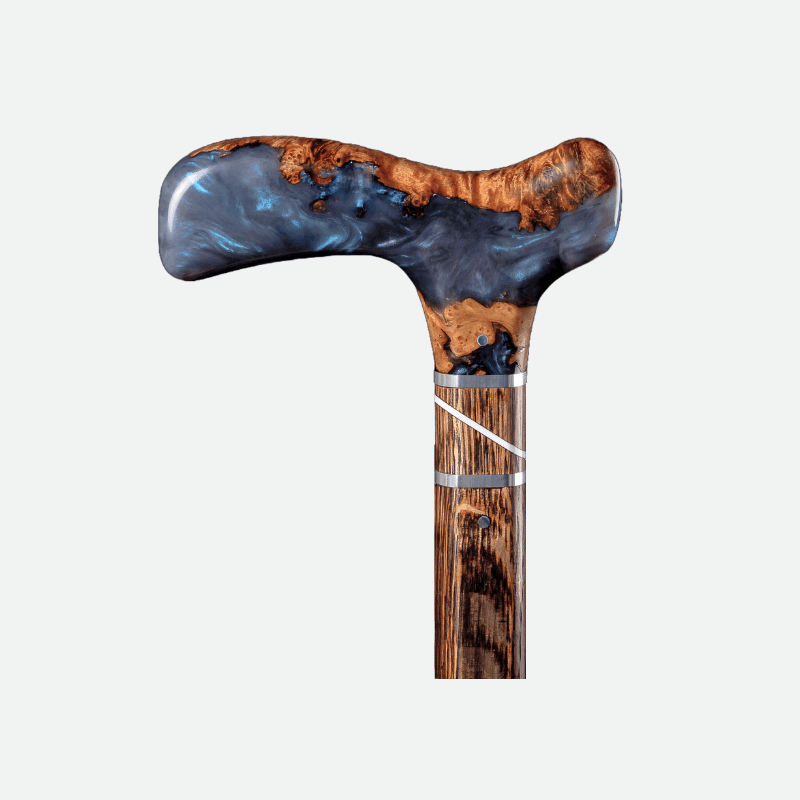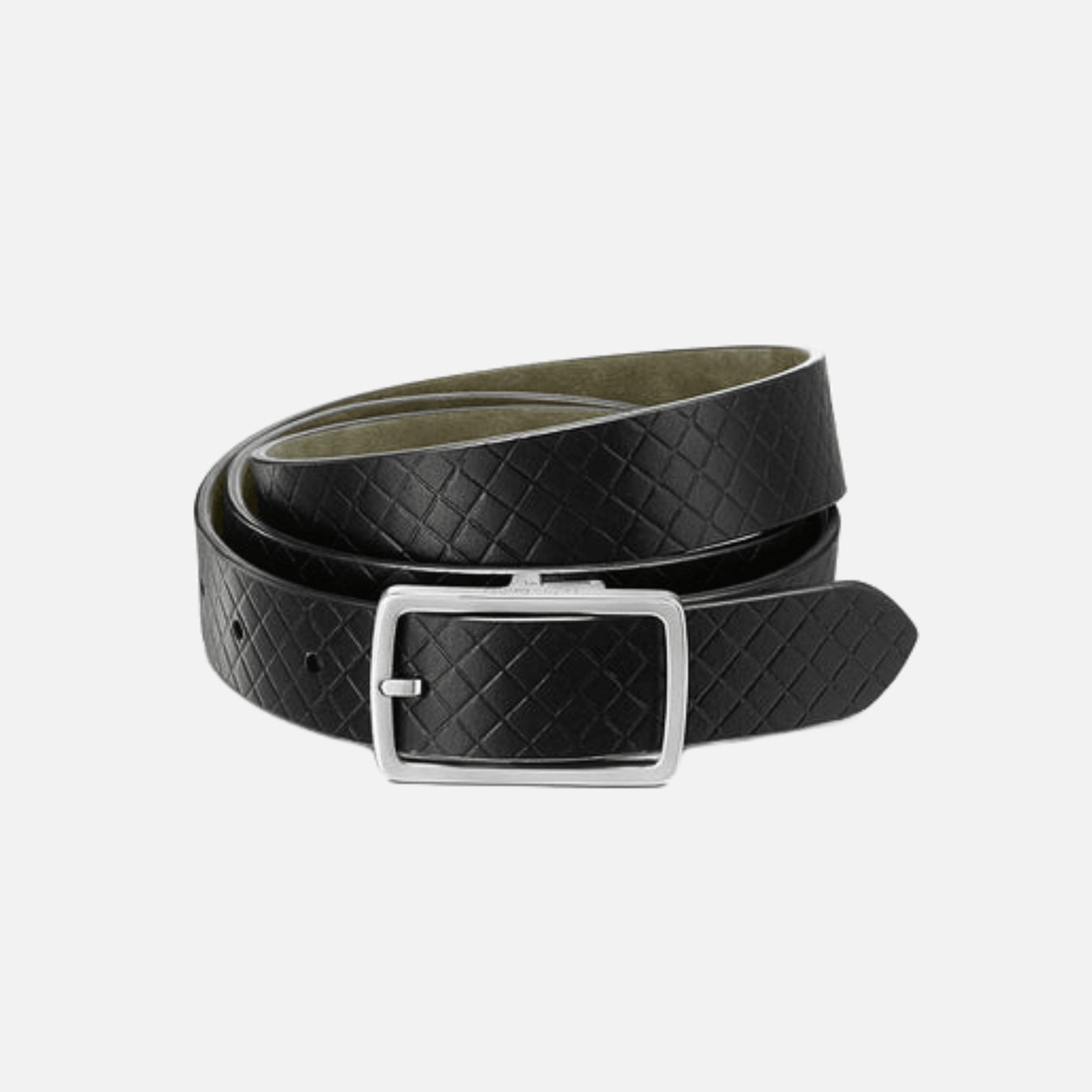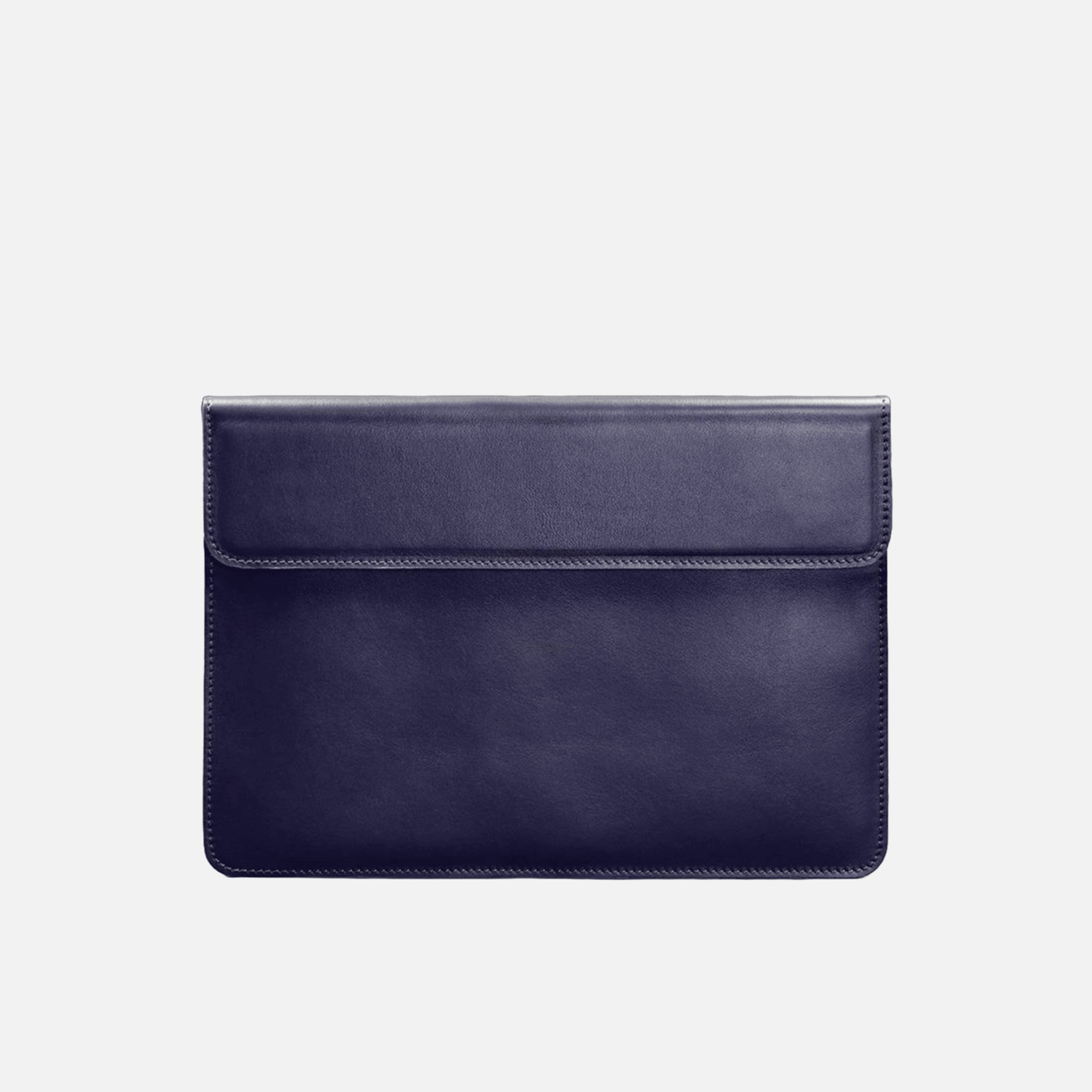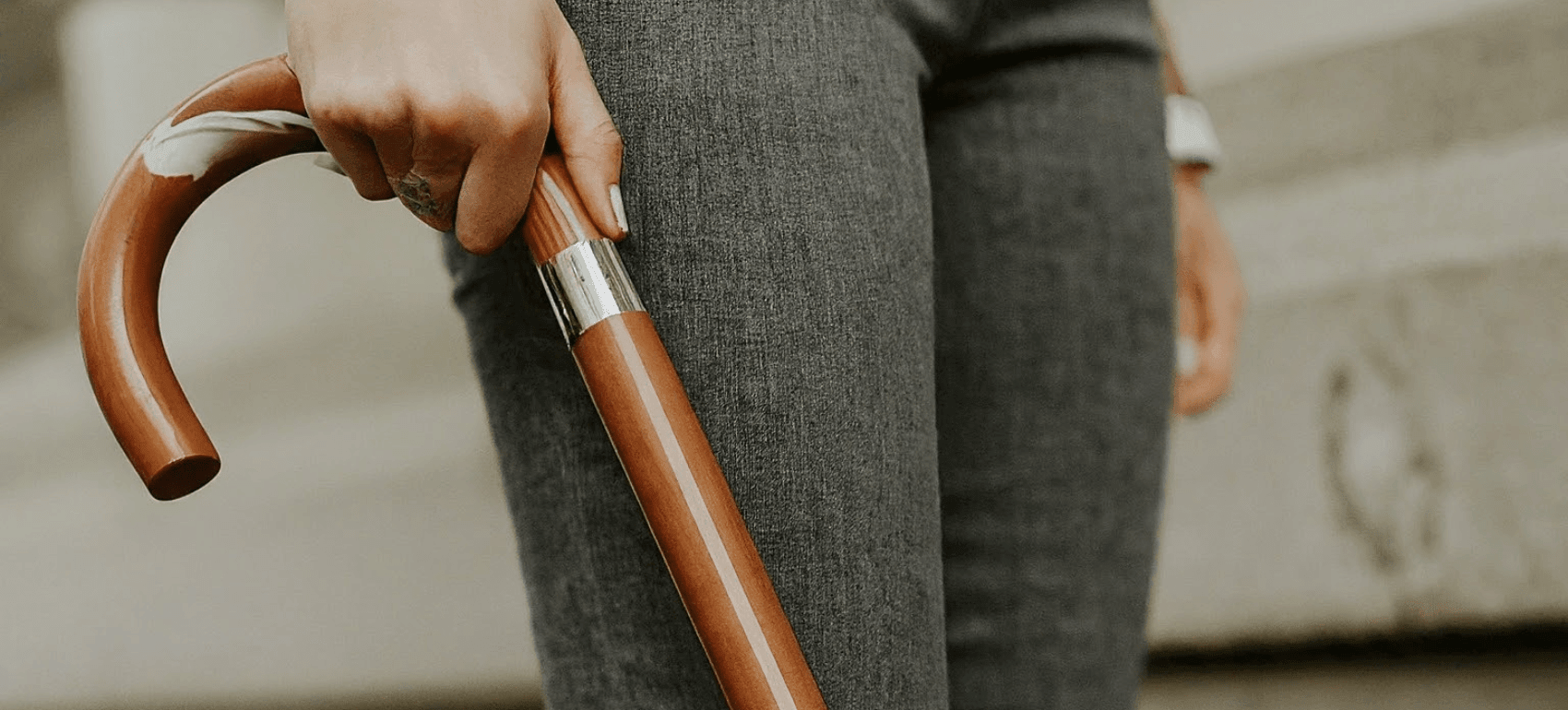
Step with Confidence: How to Choose a Cane That's Right for You
Understanding the Purpose of a Cane and Its Benefits
Walking canes have transitioned from mere assistive devices to personalized accessories, often handmade or made to order, that reflect both the user’s style and ergonomic needs. The fundamental purpose of a cane is to improve an individual’s mobility by providing additional stability and support, especially for those dealing with injuries or conditions that affect balance and walking.
Canes can significantly enhance the quality of life for users, offering several benefits:
- Increased Independence: With the support of a cane, users can navigate various environments without continuous assistance, fostering a sense of autonomy.
- Injury Prevention: By redistributing weight and reducing the load on a weakened or injured leg, canes help prevent falls and further injuries.
- Pain Relief: Canes alleviate the pressure on painful joints, particularly in the hips, knees, and ankles, making movement less painful.
- Postural Stability: Users gain better posture and alignment when walking with a cane, which is essential for long-term musculoskeletal health.
When choosing a cane, it’s crucial to consider modern design trends that blend functionality with aesthetic appeal. Trends include:
-
5 Modern Design Trends in Walking Canes for Enhanced Mobility:
- Sleek, minimalist designs.
- Lightweight materials for ease of use.
- Smart canes equipped with technology for additional safety features.
- Adjustable heights for a customized fit.
- Environmentally sustainable materials.
From Classic to Contemporary: Trends in luxury walking cane design and aesthetics often revolve around the personalization of the cane, offering everything from traditional wooden designs to contemporary motifs and engravings.
Lastly, for the cane to perform its function effectively, it must have the correct tip. Durable rubber tips sized properly, such as the 3⁄4 inch or 7⁄8 inch rubber tips, are essential for our walking stick walking canes tips to ensure optimal traction and stability. These rubber tips absorb shock and provide a secure grip on various surfaces, thereby enhancing the usability and safety of the cane.
Types of Canes: Features and Functionalities
When navigating the array of canes available, understanding the distinct types and their respective features and functionalities is vital to finding the perfect fit for your needs. Here’s an overview of various canes and the specifics they offer.
Standard Canes: These are the most common and are usually equipped with a single tip. They offer a balance of support and mobility for those with mild to moderate balance issues. Many standard canes now embody modern design trends with sleek, handmade aesthetics, which cater to users seeking a perfect blend of style and functionality.
Quad Canes: With a four-footed base, these canes provide more stability and weight-bearing capacity than single-tip models. They are especially conducive to those requiring additional support.
Adjustable Canes: These have become increasingly popular due to their versatility. Made to order, they can be altered in height to accommodate different users, ensuring optimal comfort and convenience.
Folding Canes: Ideal for active and on-the-go individuals, folding canes collapse into a compact form, making them easy to store and transport. They are practical without compromising on the support provided.
Specialty Canes: This category includes canes with unique features, such as those with built-in lights for visibility, or canes with a tripod design for additional stability. They often incorporate elements from classic to contemporary trends in luxury walking cane design.
Cane Accessories: Including 3 4 inch rubber tips and 7 8 inch rubber tips for walking stick canes, these accessories enhance the grip and durability of the cane’s end. Frequently customizable, these rubber tips are an essential add-on for improved safety.
Understanding your personal mobility needs and preferences is key when choosing from the array of canes available. Moreover, the market reflects a variety of preferences from handmade luxury pieces to the latest in 5 modern design trends in walking canes, thereby offering something to suit every individual’s sense of style and requirement for support.
The Anatomy of a Cane: Key Components to Consider
When selecting a cane, identifying key components is crucial to ensure tailored support and durability. Each aspect of a cane’s design contributes to its overall function and ease of use.
Handle Type: The cane handle is pivotal for comfort and grip. Popular styles include the ’T’ shape, ‘Derby’, ‘Fritz’, and ergonomic designs. Each provides different grip textures and positions, catering to specific needs and preferences. Handmade handles may offer a more personalized touch.
Shaft Material: Walking canes can be crafted from various materials - wood, aluminum, or carbon fiber. Woods provide classic warmth and elegance, while metals and carbon fiber offer lightweight strength. Made-to-order canes might allow selection from a wide range of materials.
Adjustability: Cane length is not one-size-fits-all. Telescoping or adjustable canes offer the flexibility to modify the height, important for proper posture and comfort.
Tip Quality: The tip of the cane is essential for stability. It’s important to consider whether the cane has 3⁄4 inch rubber tips or 7⁄8 inch rubber tips, as different sizes provide different levels of grip and feedback from the ground. Our walking stick walking canes tips are designed to enhance mobility reliably.
Weight Capacity: The cane’s weight capacity should reflect the user’s body structure, providing adequate support without risk of breakage or failure.
Design and Aesthetics: From classic wood to contemporary trends, the cane’s design should suit personal taste for those seeking luxury walking cane aesthetics. The latest design trends in canes not only focus on function but also on form, marrying both into a fashionable accessory.
Each of these components should be carefully considered to ensure the cane chosen fits the individual’s lifestyle, physical requirements, and personal taste. With the right combination of elements, a cane is not just a tool, but an extension of personal style and autonomy.
Assessing Your Mobility Needs: Factors to Consider When Choosing a Cane
When it comes to enhancing mobility, selecting the right cane is a significant decision. Individuals should thoroughly evaluate their specific needs to find a cane that offers the perfect blend of support, comfort, and style. Here are several crucial factors to bear in mind:
Personal Stability and Support Requirements: Assess the level of support you need. A cane that provides adequate stability for your body weight and balance needs is essential. If greater support is desired, a cane with a broader base can be more suitable.
Height and Fit: It is important for the cane to match your height. A cane that’s too tall or too short can affect posture and balance, possibly leading to discomfort or injury.
Handle Design: The cane’s handle should comfortably fit your hand. Ergonomic designs can reduce strain on your wrist and provide a better grip.
Weight of the Cane: Heavier canes may offer more stability, but lighter ones are easier to carry and maneuver. Consider what weight will work best for you, especially if you will be using it frequently.
Material and Construction: From classic wooden canes to modern materials such as carbon fiber, the choice depends on personal preference and the desired durability. Handmade canes or made-to-order options can provide a personal touch and quality craftsmanship.
Rubber Tip Size: Opt for a cane with a rubber tip that suits the cane’s use. Standard options include 3⁄4 inch rubber tips or 7⁄8 inch rubber tips for walking stick canes, ensuring safety and traction.
Aesthetic Appeal: Canes are not just functional; they reflect personal style. Whether you prefer classic designs or are interested in exploring 5 modern design trends in walking canes, there’s something to suit every taste. The market ranges from luxury walking canes with contemporary aesthetics to more traditional looks.
Remember, choosing a cane is a personal decision that impacts daily life. By considering these factors, you can step with confidence, knowing you have selected a cane that meets all your mobility needs.
Material Matters: Wood, Metal, and Composite Canes
When stepping into the realm of enhanced mobility, the components of your cane play a vital role in its functionality and aesthetic appeal. Those with an appreciation for the traditional might gravitate towards wooden canes. Frequently appearing in FAQs, handcrafted wooden sticks represent classic design and are often made to order, allowing users to possess a piece that is uniquely theirs. The robust nature of wood affords a reliable support, yet buyers should be mindful of the potential for heavier weight compared to other materials.
Metal canes, on the other hand, provide modern design trends in walking canes with sleekness and durability. Aluminum, being lightweight and sturdy, is a popular choice, often suited for those seeking a blend of elegance and practicality. Metal shafts can facilitate height adjustment features and usually end with a 5⁄8 inch rubber tip or a 7⁄8 inch rubber tip for our walking stick walking canes tips, to offer stability and grip.
Composite canes are the intersection of innovative materials and enhanced mobility. Made from a combination of materials like carbon fiber, they offer the lightness of aluminum with the strength close to metal. They can embody from classic to contemporary trends in luxury walking cane design and aesthetics and are ideal for those who demand a cutting-edge and adaptable mobility solution.
- Wooden canes evoke traditional craftsmanship and can be weightier.
- Metal canes offer adjustment features and durability with a modern appearance.
- Composite canes are lightweight, strong, and boast advanced design elements.
Choosing the right material for a cane involves considering the user’s preferences for weight, durability, and style, which can greatly affect comfort and confidence while walking.
Ergonomics and Comfort: Selecting the Right Grip for Your Hand
Ergonomics plays a crucial role when it comes to selecting a walking cane. A properly designed grip can reduce strain on the wrist, increase comfort, and improve stability. To ensure you step with confidence, paying attention to the handle that fits your hand is of utmost importance.
When searching for the ultimate walking cane, consider the size of your hand and your grip strength. The grip should feel natural and comfortable, allowing for a firm hold without causing hand fatigue. A grip that is too large or too small can lead to discomfort and a lack of control.
Look for canes that feature contoured handles, designed to follow the natural shape of your palm. These ergonomic designs distribute weight evenly across the hand, reducing pressure points and the risk of blisters. Handles crafted from materials such as foam or rubber can provide additional cushioning for comfort during extended use.
For individuals interested in handmade or made-to-order options, artisans can create custom grips tailored to the unique contours of your hand. These bespoke solutions offer a higher level of personalization and, therefore, comfort.
Modern design trends in walking canes also influence the ergonomics of cane grips. Among the 5 modern design trends for enhanced mobility, look for those that blend form with function, as they are likely to prioritize ergonomics.
Remember to pair your selected grip with a compatible tip. The standard sizes for rubber tips are 3⁄4 inch and 7⁄8 inch. These rubber tips provide the walking stick with adequate traction and stability, enhancing the overall safety of the user.
When transitioning from classic to contemporary, luxury walking cane designs often incorporate aesthetics without compromising on comfort. A balanced combination of style and ergonomic design ensures that your mobility aid is not just a functional tool, but also an extension of your personal style.
Adjustability and Height: How to Determine the Proper Cane Length
Determining the proper cane length is crucial for comfort, stability, and to prevent strain on the user’s body. To ensure the cane is of the correct height, one should stand upright wearing their regular walking shoes. The user’s arm should bend slightly at the elbow, about a fifteen to twenty-degree angle. When holding the cane, the top should align with the crease of the wrist when the arm is at rest.
For those who require tailor-made solutions, made-to-order canes provide individual customization to suit specific needs, incorporating personal measurements and preferences. Some canes come with adjustable features, allowing users to set the height to their ideal comfort level. For example, a cane with adjustable sections can be lengthened or shortened as needed. To adjust the height:
- Loosen the lock on the cane.
- Slide the cane to the desired length, ensuring it aligns with the user’s wrist crease.
- Tighten the lock to secure the new height.
Walking canes often come with rubber tips to enhance grip and safety. Customers should ensure that these tips, whether they’re 3⁄4 inch or 7⁄8 inch rubber tips for walking stick walking canes, are compatible with the cane they choose, as the tip size contributes to the overall height and functionality of the cane.
With modern design trends, from classic handcrafted elegance to contemporary luxury walking cane aesthetics, selecting a cane with the perfect height adds not only to mobility but also to personal style. To accommodate these trends, many designers offer a range of sizes or customizable options to ensure that the cane isn’t just a support tool but also a testament to the user’s individuality.
Remember that a properly adjusted cane reduces the risk of a fall, enhances mobility, and adds to the user’s confidence while walking. Thus, investing the time to select the right height is fundamental for a beneficial walking experience.
Stability and Support: Single-tip vs. Quad-tip Canes
When it comes to selecting a cane for enhanced mobility, stability, and support are paramount considerations. Single-tip and quad-tip canes each offer different benefits, and the choice between them should be informed by the user’s specific needs and preferences.
Single-tip canes are the classic choice, featuring a singular point of contact with the ground. They are usually lighter and more aesthetically versatile, often reflecting the latest trends in luxury walking cane design. When crafted with care and attention to detail, a handmade single-tip cane can be both a functional aid and a fashion statement. These canes might suit users who require minimal support and possess good balancing skills.
Conversely, quad-tip canes, also known as quad canes, provide a larger base of support with four 3⁄4 inch or 7⁄8 inch rubber tips ensuring stability. This design reduces the risk of slipping and is beneficial for those needing extra help with balance. Quad-tip canes stand upright on their own, an advantage for users who may need to free up their hands momentarily without the worry of the cane falling over. The stability offered by quad-tip canes can mean a slightly heavier design, but for many users, the added confidence in each step is worth the trade-off.
Choosing between a single-tip or quad-tip cane may also depend on the environment in which it will be used. Smooth indoor surfaces may be navigable with a single-tip cane, while uneven outdoor terrains might call for the sturdiness of a quad-tip model. It is important to consider made-to-order options, as they can be tailored to individual requirements, ensuring that the cane not only provides stability but also fits comfortably and is of appropriate height and design for the user.
When selecting a cane, one should consider the offered balance between the FAQs of everyday use, such as the need for a 5 modern design or the practicality of 3⁄4 inch or 7⁄8 inch rubber tips, all while ensuring it falls within an aesthetic choice that reflects one’s personal style from classic to contemporary design trends.
Aesthetic and Style: Finding a Cane That Matches Your Personal Style
When selecting a cane, considering one’s personal aesthetic and style is as crucial as any other functional aspect. With a variety of choices available, one can find an accessory that not only meets their mobility needs but also aligns with their fashion sensibilities. From classic to contemporary, trends in luxury walking cane design and aesthetics offer something for every taste.
Handmade Elegance: Handmade canes provide a unique, personal touch that is often absent in mass-produced items. These canes often exhibit craftsmanship and detail, allowing individuals to showcase their appreciation for artisanal quality.
Made to Order Sophistication: For those desiring a truly tailored experience, made to order canes assure that every aspect of the cane—from wood choice to the handle design—meets the user’s specifications, ensuring that style preferences are addressed with precision.
Modern Design Trends: Keeping up with 5 modern design trends in walking canes for enhanced mobility can be a rewarding endeavor. These trends might include sleek, minimalist designs, or perhaps bold patterns and colors that defy traditional expectations.
Customization Options: Adding personal flair is effortless with various customization options such as engraving, or choosing unique 3⁄4 inch rubber tips for our walking stick walking canes tips, or perhaps the larger 7⁄8 inch rubber tips for our walking stick walking canes tips, both of which provide functional grounding with a dash of style.
Material and Texture: Modern canes are available in an array of materials—carbon fiber, titanium, ornate woods—and textures, enabling users to align their walking aid with their wardrobe or occasion.
The key is to consider your everyday wear and the environments you frequent. A cane that complements a formal ensemble might differ vastly from one that is paired with casual attire. Fortunately, the spectrum from classic to contemporary cane designs means there exists a perfect match for any style. Remember, a cane is not just a mobility aid but a personal statement.
Special Features and Accessories: Attachments and Technology Integration
When selecting a cane that aligns with individual needs, prospective buyers should consider the availability and compatibility of special features and accessories. These can greatly enhance the functionality and user experience of the walking aid.
Attachments:
- 3⁄4 Inch Rubber Tips: Most canes come standard with rubber tips to help prevent slippage. These tips, often 3⁄4 inch for a regular walking stick, provide the necessary traction and stability on various surfaces.
- 7⁄8 Inch Rubber Tips: For walking canes that are designed to withstand more weight or for larger canes, 7⁄8 inch rubber tips may be the appropriate choice. These wider tips distribute weight more evenly and can provide a more secure base.
- Ice Grippers: For users living in colder climates, attachable ice grippers can be a game-changer, allowing for safer navigation of icy paths.
- LED Lights: Some canes come equipped with LED lights to enhance visibility during the night. These lights can be a boon for those who enjoy evening strolls or simply need to maneuver through low-light environments.
- Folding and Adjustable Features: For on-the-go convenience, canes with folding capabilities or adjustable lengths offer flexibility and ease of transport.
Technology Integration:
Modern canes are not just about sturdy support; they also incorporate technology for added safety and convenience. Such integration ensures that users are equipped with tools that cater to a technologically advancing world.
- Fall Detection: Advanced walking canes may include fall detection technology, triggering an alarm or directly notifying a caretaker in the event of a fall.
- GPS Tracking: For those with memory issues or concerned loved ones, some canes can be equipped with GPS tracking to monitor location and provide peace of mind.
- Health Monitoring: Integration with health monitoring devices enables users to keep track of their physical activity, heart rate, and overall wellness directly through their cane.
- Customization Apps: Made-to-order or handmade canes are complemented by apps that enable users to customize settings such as LED brightness or cane height from their smartphones.
By considering these specialized attachments and technology integrations, customers can select a cane that not only complements the 5 modern design trends in walking canes but also enhances their mobility and lifestyle. Whether from classic to contemporary trends in luxury walking cane design and aesthetics or the practical appeal of technology integration, the right cane is one that provides confidence, safety, and personal expression.
Maintenance and Care Tips for Your Cane
To ensure your cane provides the best support and maintains its appearance, it’s crucial to adopt a regular care routine. Adhering to these tips not only extends the lifespan of the cane but also guarantees safety during use.
Inspect Regularly: Check your cane, particularly if it is handmade or made to order, for any signs of wear or damage. Look for cracks in the wood, loose parts, or signs of strain.
Clean Gently: Clean the cane with a soft, slightly damp cloth. For wooden canes, avoid harsh chemicals that can strip the finish. Metal or carbon fiber canes could be wiped with appropriate cleaners.
Address Rubber Tips: Replacing worn 3⁄4 inch rubber tips or 7⁄8 inch rubber tips is essential. Frayed or split tips can reduce stability, making the cane unsafe. Keep spares for easy replacement.
Avoid Moisture: While many canes are sealed for protection, excessive moisture can damage them. When possible, avoid using your cane in wet conditions and dry it thoroughly if it becomes wet.
Store Properly: When not in use, store the cane in a vertical position to avoid bending or warping. Ensure it’s placed where it won’t fall and is within easy reach.
Follow Manufacturer’s Instructions: If your cane comes with specific maintenance instructions due to its materials or design—be it from classic to contemporary trends in luxury walking cane design—follow them closely.
Remember, proper maintenance not only preserves the integrity of 5 modern design trends in walking canes for enhanced mobility but also ensures user safety. Regular care will keep your cane reliable, comfortable, and stylish.
When to Replace or Upgrade Your Cane
Regular assessment of your walking cane is crucial to ensure it continues to meet your mobility needs effectively. Several signs indicate it may be time to replace or upgrade your cane:
- Wear and Tear: If the cane shows visible signs of damage, such as cracks in the material or fraying, it’s a clear indication that it’s time for a replacement.
- Unsteady Support: A cane that wobbles or no longer provides a steady grip could jeopardize your safety. Immediately consider upgrading to a newer model if you experience instability.
- Worn-out Tips: Look at the rubber tips of your cane. If they are worn down beyond the recommended 3⁄4 inch or 7⁄8 inch, it’s essential to replace them to maintain good traction and stability.
- Height Issues: Changes in your physical condition may necessitate a different height for adequate support. Ensure your cane is still the correct height; if not, an adjustable model might be the answer.
- Change in Needs: Your mobility requirements might evolve over time. A simple walking stick might need to be upgraded to a more supportive quad cane, for instance, if balance becomes more of an issue.
- Design Trends: If keeping up with the latest design trends is important to you, upgrading to a cane featuring one of the 5 modern design trends for enhanced mobility could be beneficial. Whether it’s a new aesthetic or improved ergonomic features, a contemporary cane design could increase comfort and confidence.
Choosing a handmade or made-to-order cane can ensure that you have a personalized, high-quality device that stands the test of time. However, always be prepared to reassess based on these criteria, as even the most luxurious walking cane might need replacement or an upgrade for your safety and optimal mobility.
Navigating Insurance and Medicare Coverage for Mobility Aids
When contemplating the investment in a mobility aid such as a cane, understanding insurance and Medicare coverage is crucial. Insurance policies and Medicare can often contribute to the cost of mobility aids, but the particulars of coverage can be complex.
For individuals requiring a mobility aid, here’s a step-by-step guide to help navigate the insurance and Medicare process:
Confirm Coverage: Check with your insurance provider or Medicare to determine if mobility aids like canes are covered. Remember to inquire about the specifics, such as if there are preferred brands, models, or suppliers.
Prescription Requirements: Most insurance and Medicare plans will require a prescription from a healthcare provider to cover a cane. Ensure that it specifies the necessity for the mobility aid due to a medical condition.
Understand Limitations: Be aware that there may be restrictions on the frequency of replacements. For instance, Medicare may cover the cost of a cane only once every five years.
Out-of-pocket Costs: Determine your deductible and copayment amounts to understand your potential out-of-pocket expenses. Keep in mind that custom elements such as handmade design features, made-to-order specifications, or the incorporation of 5 modern design trends in walking canes may not be covered.
Specialty Tips: Canes with specific features, such as those equipped with 3⁄4 inch or 7⁄8 inch rubber tips for our walking stick walking canes tips, might need additional justification for coverage.
Luxury Elements: From classic to contemporary, there’s a wide range of trends in luxury walking cane design and aesthetics. Be mindful that Medicare and many insurance plans typically don’t cover items that are considered convenience or luxury features.
Before selecting a cane, it’s advisable to consult with a healthcare professional or a medical equipment specialist who is experienced in dealing with insurance and Medicare. They can offer guidance and assistance throughout the process, ensuring compliance with specific coverage criteria while helping individuals step confidently with the right cane for their needs.
Professional Consultation: When to Seek Guidance from a Healthcare Provider
Selecting a walking cane may seem straightforward, but understanding when to seek professional guidance ensures safety and comfort. The journey from classic styles to contemporary trends in luxury walking cane design and aesthetics might necessitate healthcare provider input, particularly for users requiring specialized support.
- Pre-existing Medical Conditions: Individuals with conditions that impact balance, strength, or coordination should consult a healthcare provider. This ensures the cane’s specifications will aid their particular needs without exacerbating their condition.
- Postoperative Recovery: Following surgery, especially on the hips, knees, or feet, a provider will assess recovery progress and prescribe the correct type of cane, possibly with specific features like 3⁄4 inch or 7⁄8 inch rubber tips for our walking stick walking canes to ensure stability.
- First-time Users: Beginners may find the array of options—from handmade to made-to-order canes—overwhelming. A healthcare provider can offer expert advice on the 5 modern design trends in walking canes and recommend a cane with the appropriate height and grip for enhanced mobility.
- Updates in Physical Condition: Should there be a change in a user’s physical abilities or an increase in discomfort with their current cane, re-evaluation by a professional is advised.
In some cases, healthcare providers may suggest a custom solution that combines both function and the user’s personal style preference, navigating from FAQ concerns to selecting a cane embodying both modern design trends and individual personality.
A healthcare provider’s guidance is invaluable when questioning the adequacy of the cane’s support or considering an upgrade for aesthetic reasons. The goal is to ensure that the walking cane is not just a mobility tool, but a confident step towards sustained independence and quality of life.

